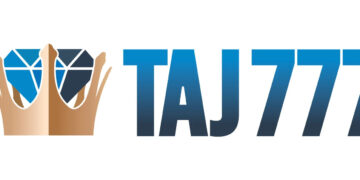Understanding your electricity bill can feel overwhelming at first. With all the numbers, technical terms, and abbreviations, it might seem like you need a degree in electrical engineering to make sense of it. But once you break it down into sections, reading an electricity bill becomes a simple and powerful way to monitor your energy use, avoid billing surprises, and even save money. In this blog, we’ll walk you through each component of your electricity bill and explain what it means for your wallet and your home’s energy efficiency.
Why You Should Learn to Read Your Electricity Bill
Your electricity bill is more than just a request for payment. It’s a detailed report of how much energy you’ve used, what it costs, and how that usage compares to previous months. Many people use tools like an Electricity Bill Generator to estimate future bills, plan their budgets, or verify the accuracy of their provider’s charges. Whether you’re trying to cut down on usage, understand time-of-use pricing, or catch errors on your bill, knowing how to read it is the first step toward energy literacy.
Key Sections of a Standard Electricity Bill
Although the layout and language of electricity bills vary by provider and country, most follow a similar structure. Let’s break down the core components:
1. Account Information
This section typically includes:
- Your name and address
- Account number
- Billing period (start and end dates)
- Invoice number
Always verify this information to make sure you’re not being billed incorrectly.
2. Meter Readings and Usage
This section shows the number of kilowatt-hours (kWh) you’ve used during the billing cycle. It often includes:
- Previous meter reading
- Current meter reading
- Total usage (Current – Previous)
- Meter number
Some bills show actual readings, while others show estimated readings. If your bill is estimated too often, contact your provider for an actual reading or consider submitting it yourself.
3. Breakdown of Charges
Here’s where the costs are outlined. Charges may include:
- Basic Service Charge – A fixed cost for maintaining service, even if you use no electricity.
- Energy Charge – Based on how much electricity you used (measured in kWh).
- Time-of-Use Charges – Some providers charge more during peak hours.
- Fuel Adjustment Charges – Adjusted based on the cost of fuel or energy supply.
- Taxes and Regulatory Fees – Vary based on region.
Review these carefully. Understanding the difference between fixed and variable charges can help you manage costs more effectively.
4. Graphical Usage Summary
Many bills include bar graphs or pie charts that display:
- Your usage history over the past 6–12 months
- Comparisons to previous months or the same month last year
- Average daily usage
These visuals are handy for spotting seasonal trends or unusual spikes in usage.
5. Messages and Alerts
Utility companies often include messages such as:
- Rate changes
- Scheduled outages
- Energy-saving tips
- Promotions and rebates
Don’t ignore this section—it might help you save money or avoid inconvenience.
6. Payment Options and Due Date
This section provides:
- The total amount due
- Payment due date
- Ways to pay (online, mail, in-person, auto-pay)
- Late payment fees
Make a note of your due date to avoid penalties or service interruptions.
How to Use the Data on Your Bill to Save Money
Once you know how to read your electricity bill, you can use it to make smarter choices. Here are some practical tips:
1. Monitor Your kWh Usage
If your bill has spiked suddenly, look at the usage in kWh. Was the increase due to heating, cooling, or an appliance left running? Use the info to investigate high-consumption devices.
2. Understand Time-of-Use Rates
If you’re on a time-of-use plan, shift your energy usage to off-peak hours. For example, run dishwashers and laundry machines late at night or early in the morning.
3. Compare Billing Periods
Look at the same period last year. Are you using more or less energy? A consistent upward trend might mean it’s time for an energy audit.
4. Use an Electricity Bill Generator
Want to predict what your next bill might look like? Tools like an Electricity Bill Generator let you input your average usage, time-of-use rates, and tariff plans to estimate your next invoice. This helps with budgeting and reduces the chance of surprise charges.
Common Terms Found on an Electricity Bill
Let’s break down a few terms that often confuse people:
- kWh (Kilowatt-Hour) – A measure of how much energy you use. One kWh is using 1,000 watts for one hour.
- Demand Charge – Based on your highest usage during a billing period, typically for commercial accounts.
- Tariff – The pricing plan you’re on. It can vary based on usage, time, or other factors.
- Connection Fee – A one-time or monthly charge for being connected to the grid.
- Green Energy Contribution – A small charge that supports renewable energy initiatives.
Tips for Avoiding Common Billing Mistakes
Billing errors happen more often than you think. Here are ways to stay vigilant:
- Double-check meter readings – Especially if your bill is estimated.
- Look for duplicated charges – Sometimes a line item may be repeated.
- Audit your appliances – If your bill seems unusually high, check for malfunctioning devices.
If something seems off, contact your provider. Most utilities have a dispute resolution process and customer service team to assist.
Going Paperless and Monitoring Your Bill Online
Many energy companies now offer apps or online dashboards where you can:
- Track real-time usage
- Download previous bills
- Set usage alerts
- Change tariff plans
Going digital helps you stay on top of your energy habits and provides faster access to your billing history.
Final Thoughts: Take Charge of Your Energy Knowledge
Reading an electricity bill may not be exciting, but it’s essential. Once you understand what each section means, you gain insight into your energy consumption and the costs associated with it. Whether you’re trying to cut down on your carbon footprint, reduce your monthly expenses, or just avoid being overcharged, your electricity bill is a powerful tool.




















